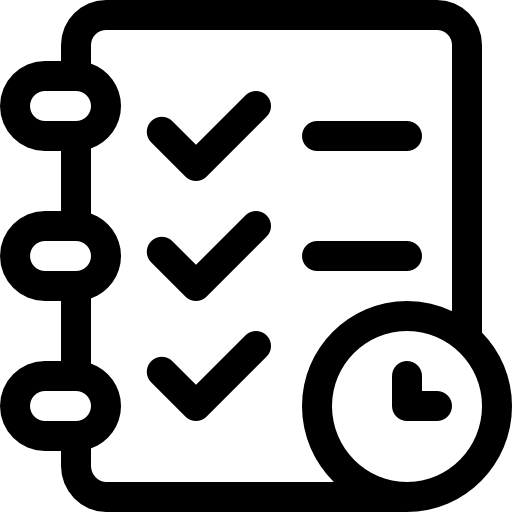Medicare Plans
Medicare Part D: Understanding Prescription Drug Coverage
Since 2006, Medicare Part D has helped beneficiaries manage the cost of prescription drugs, which are not covered by Original Medicare. Part D is available through private insurance companies either as a stand-alone Prescription Drug Plan (PDP) for those with Original Medicare or as part of a Medicare Advantage Plan. Each plan includes a formulary—a comprehensive list of covered prescription drugs.
To help control costs, many Part D plans categorize covered medications into “tiers.” Each tier represents a different cost level, with lower-tier drugs typically being more affordable. Because premiums for Part D plans vary and are set annually, it is important to review your prescription drug costs each year to ensure your plan meets your needs.Even if you do not currently take any medications, enrolling in a Part D plan when you first become eligible is recommended. Delaying enrollment may result in a “late enrollment penalty,” which increases every month you go without Part D coverage and can become costly over time.
If you have Medicare Part A and/or Part B and do not have other drug coverage, enrolling in a Part D plan as soon as possible can help protect you from rising prescription drug costs. Affordable options are available, and a licensed Assurance Life Group agent can assist you in finding the right plan for your needs.
Key Advantages of Medicare Part D

With many different Medicare Part D plans available, you can pick one that fits your budget and needs

Many plans have a network of preferred pharmacies where you can get your medication at a lower cost

These plans are designed to be flexible so you can change plans or make adjustments.
What Do Medicare Part D Plans Cover?
Medicare Part D plans cover a broad range of prescription drugs, including medications in specific “protected classes” such as those used to treat cancer or HIV/AIDS. Both brand-name and generic drugs are included, with generic medications required to have the same active ingredients and meet the same standards for quality, purity, and strength as their brand-name counterparts.Each Medicare Part D plan must cover at least two drugs in every therapeutic category, but the specific drugs covered may vary by plan. If a plan’s formulary does not include the exact medication you need, a similar alternative is often available. If no suitable option exists, you or your healthcare provider can request an exception to access a specific medication.
Medicare drug plans typically organize medications into cost tiers, which determine how much you pay out-of-pocket. Here is a sample breakdown of these tiers:
- Tier 1: Most generic prescription drugs, lowest co-payment
- Tier 2: Preferred brand-name prescription drugs, medium co-payment
- Tier 3: Non-preferred brand-name prescription drugs, high co-payment
- Specialty Drugs and Biosimilars: High-cost prescription drugs, highest co-payment
What isn’t covered by Medicare Part D plans?
Each Medicare Part D prescription drug plan decides which drugs not to include in its formulary, though most exclude prescription drugs for things like weight loss or gain, fertility, sexual dysfunction, hair growth and over-the-counter medications.
Prescription Drug Coverage & Medicare Advantage: What To Know
Medicare pays a fixed amount to companies that offer Medicare Advantage Plans. Medicare Advantage Drug Plans (MA-PDs), which help cover drugs as well as medical services, are generally utilized by people who receive Medicare benefits in a combined package via a PPO or HMO. A Medicare Advantage Plan may also provide coverage for things like basic vision, routine dental, and hearing services, as well as fitness-based activities.
Medicare drug coverage costs
Due to the inherent variability of drug coverage costs, SmartMatch is unable to provide specific costs. Numerous factors account for the variety of drug coverage costs, including:
- Type of prescription
- Whether or not it’s on your plan’s formulary
- Which tier the drug falls under
- Whether your deductible has been met, or if you’re in catastrophic
- Whether your pharmacy is in or out of network
Medicare Part D: Enrolling and Changing Prescription Drug Coverage Plans
You can enroll in a Medicare Part D plan as soon as you become eligible for Medicare. It is recommended to enroll as soon as you qualify to avoid paying higher premiums in the future. If you delay enrollment, Medicare applies a 1% penalty to your premium for each month you go without coverage, though you have a 62-day grace period to sign up before the penalty begins. If you need assistance finding the right plan, a licensed insurance agent can guide you through the process and help you compare options to select the best coverage for your needs.
When to Enroll in a Prescription Drug Plan
Initial Enrollment Period
The Initial Enrollment Period (IEP) for Medicare Part D usually aligns with the IEP for Medicare Part B. This seven-month window begins three months before you become eligible for Medicare, which is typically three months before your 65th birthday month. During this period, you can sign up for a Medicare prescription drug plan to ensure you have coverage when you need it.
Open Enrollment Period
The Open Enrollment Period, also known as the Annual Enrollment Period or Annual Election Period, runs from October 15 to December 7 each year. During this time, you can join, switch, or drop a Medicare prescription drug plan. If you make a change during this period, your new coverage will begin on January 1, provided your request is received by the December 7 deadline.
Medicare Advantage Open Enrollment Period
The Medicare Advantage Open Enrollment Period occurs from January 1 to March 31 each year. During this time, individuals already enrolled in a Medicare Advantage Plan can switch to a different Medicare Advantage Plan or transition to Original Medicare with or without a separate prescription drug plan. It is important to note that you can only make one change during this three-month period.
Special Enrollment Periods
Special Enrollment Periods (SEPs) provide opportunities to adjust your prescription drug coverage outside of the standard enrollment periods if you experience certain qualifying life events. These may include losing other prescription drug coverage, moving to a new service area, or other specific circumstances. SEPs allow you to ensure you maintain the coverage you need when life changes occur.
Medicare Plans
Expert Support On Every Step
Call us Now
561-566-5131
FAQs About Medicare Part D
What are the three prescription drug coverage stages?
The three stages of prescription drug coverage represent different phases during which your out-of-pocket costs may vary depending on the stage you are in. These stages are:
Annual Deductible
This stage begins with your first prescription of the plan year. During this phase, you are responsible for paying the full cost of your prescriptions until you meet your plan’s deductible amount.
Initial Coverage
Once your deductible is met, you enter the initial coverage phase. During this period, your plan pays a portion of the cost for medications covered under your plan’s formulary. You are responsible for paying the remaining amount through copayments or coinsurance, which varies based on the drug’s tier level.
Catastrophic Coverage
Starting in 2025, you will enter catastrophic coverage once your out-of-pocket spending reaches $2,000. At this point, you will no longer have to pay any out-of-pocket costs for your covered prescriptions for the rest of the year
What drugs are not paid for by Medicare?
Federal law typically precludes Medicare from covering certain kinds of drugs, including:
- Drugs used for weight gain/loss or to treat anorexia.
- Fertility drugs
- Cold or cough medications
- Prescription vitamins
- Drugs used for cosmetic purposes (i.e., hair growth), though drugs used to treat psoriasis and rosacea may be covered under Medicare Part D
When can I join, switch or drop Medicare drug coverage?
You may join, switch, or drop a plan during the OEP from Oct. 15 – Dec. 7 each year. As long as your new plan receives your request by Dec. 7, this new coverage will commence Jan. 1. You can join a plan during your IEP upon becoming eligible for Medicare. If enrolled in Medicare Advantage, you may change to a different Medicare Advantage Plan or switch to Original Medicare during the Medicare Advantage Open Enrollment Period from Jan. 1 – March 31 each year.
What if my Medicare Part D plan won’t cover a drug I need?
One option is to determine whether the medication you need is covered by Medicare under a different Part A or B. If not, you may request a formulary exception from a doctor and/or your plan. If it’s determined the drug is necessary to your health, you’ll need a written statement to that effect from a doctor or other healthcare provider.
How do I file a Medicare drug coverage complaint (grievance)?
If you are unhappy with your Medicare Part D or Medicare Advantage prescription drug plan, you can file a grievance, a formal complaint submitted to your plan. Such a complaint may be filed due to a coverage denial, customer service problem, or difficulty understanding written instructional materials. An enrollee can file a grievance orally or in writing to your plan. Each must be filed no later than 60 days after the incident/event that caused the complaint.
Protect What Matters – Get Started Today!
Let’s secure your future with the right insurance.
Quick Links
Other Links
Assurance Life Group © 2025 All rights reserved.



